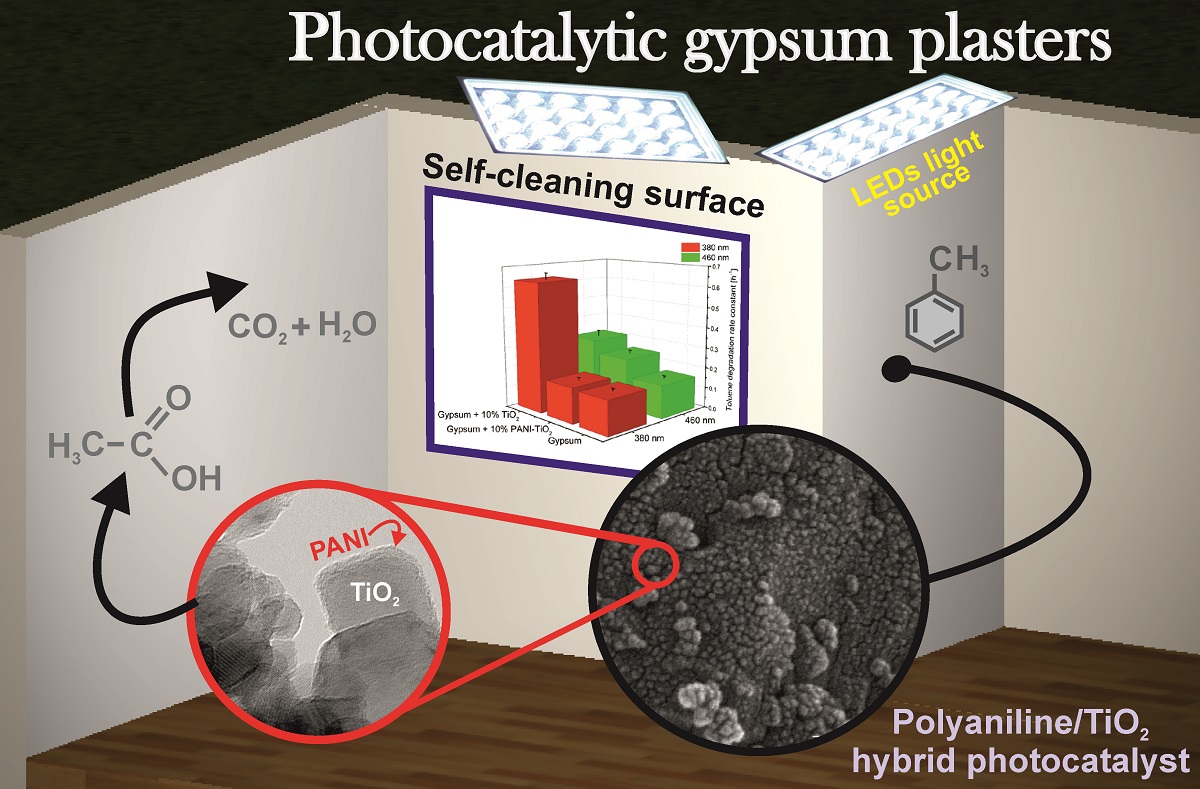Hybrid materials of conjugated polymer and titanium(IV) oxide have attracted considerable attention concerning potential benefits, including (i) efficient exploitation of visible light, (ii) high adsorption capacity for organic contaminants, (iii) effective charge carriers separation. The new class of the photocatalysts is promising for the removal of environmental pollutants in both aqueous and gaseous phases. For the first time, in this study, the PANI/TiO2 hybrid composite was used for the degradation of phenol in water and toluene in the gas phase. Polyaniline-TiO2 was prepared by in-situ polymerization of aniline on the TiO2 surface. The obtained hybrid material was characterized by diffuse reflectance spectroscopy (DR/UV-Vis), X-ray diffraction (XRD), fast-Fourier transformation spectroscopy (FTIR), photoluminescence (PL) spectroscopy, microscopy analysis (SEM/TEM) and thermogravimetric analysis (TGA). An insight into the mechanism was shown based on the photodegradation analysis of charge carriers scavengers. Polyaniline is an efficient TiO2 photosensitizer for photodegradation in visible light (λ> 420 nm). The trapping experiments revealed that mainly h+ and ˙OH were reactive oxygen species responsible for phenol degradation. Furthermore, the PANI-TiO2 hybrid nanocomposite was used in gypsum plaster to study the self-cleaning properties of the obtained building material. The effect of PANI-TiO2 content on hydrophilic/hydrophobic properties and crystallographic structure of gypsum was studied. The obtained PANI-TiO2 modified gypsum plaster had improved photocatalytic activity in the reaction of toluene degradation under Vis light.

